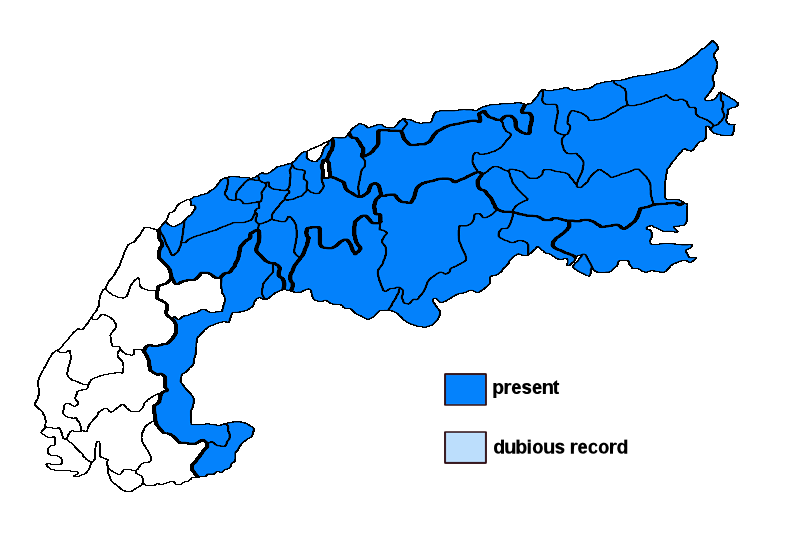Cetrelia olivetorum (Nyl.) W.L. Culb. & C.F. Culb.
Syn.: Parmelia cetrarioides (Delise ex Duby) Nyl. var. rubescens (Th. Fr.) Du Rietz, Parmelia olivetorum Nyl., Parmelia rubescens (Th. Fr.) Vain. nom.illeg., Pseudoparmelia aradensis Gyeln.
Lichenised.
Substrate: bark,
Altitudinal range: from the submediterranean/colline belt (potential vegetation: mixed deciduous forests dominated by Quercus and Carpinus) to the montane belt (potential vegetation: deciduous forests dominated by Fagus sylvatica and closed coniferous forests with Picea abies)
Note: a species with the olivetoric acid syndrome, found on bark of broad-leaved trees and on epiphytic, more rarely silicicolous mosses in humid, old forests, locally still abundant in montane Abies-Fagus forests, especially in the Eastern Alps.
Austria: Vorarlberg; Tirol; Salzburg; Kärnten; Steiermark; Oberösterreich; Niederösterreich (incl. Wien); Burgenland; Germany: Oberbayern; Schwaben; Switzerland: Bern; Glarus; Graubünden; Luzern; St. Gallen; Schwyz; Ticino; Uri; Unterwalden; Vaud; Valais; Italy: Friuli; Veneto; Trentino Alto Adige; Lombardia; Piemonte; Liguria; Slovenia: Alpine and Pre-Alpine Slovenia; Trnovsky Gozd;





